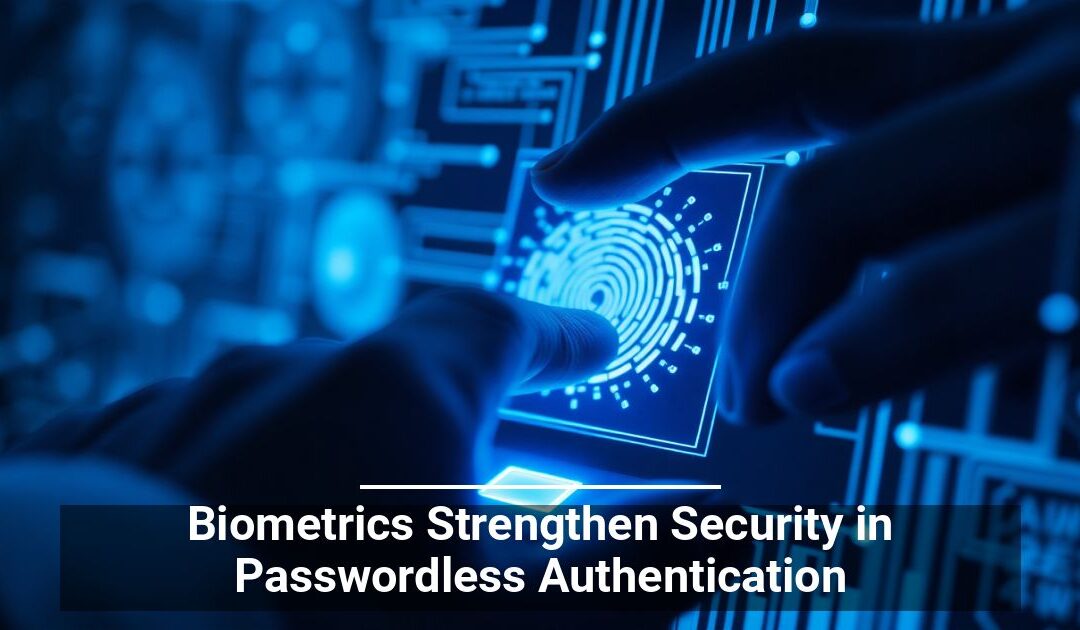 Passwords undoubtedly remain the weakest link in cybersecurity. Employees use easy-to-guess passwords or never change them, and hackers steal them using malware and phishing attacks. No wonder research from the access management company Okta reveals that more businesses are adopting biometrics to keep the bad guys out.
Passwords undoubtedly remain the weakest link in cybersecurity. Employees use easy-to-guess passwords or never change them, and hackers steal them using malware and phishing attacks. No wonder research from the access management company Okta reveals that more businesses are adopting biometrics to keep the bad guys out.
Why Biometrics Are a Security Powerhouse for Every Business
Biometric authentication verifies user identity based on unique human traits like fingerprints, facial recognition, retina or iris scans, and even voice patterns. Unlike passwords or traditional multi-factor authentication (MFA), which hackers can steal or intercept, it’s practically impossible to replicate biometric data. There’s no phishing attack clever enough to steal your fingerprint through an email link.
Biometrics also eliminates the security risks created by weak or reused passwords. Many employees still rely on predictable credentials across multiple accounts, making them easy targets. With biometrics, there’s no password to remember, reset, or leak, so it strengthens security by eliminating the human error factor from authentication.
Biometrics Has a Clear Advantage Over MFA for Protecting Your Business
Many businesses implemented multi-factor authentication (MFA) as a step up from passwords. MFA requires users to enter a second factor, such as a single-use passcode sent via SMS to gain access to secure platforms.
Although MFA is more secure than a standalone password, it still has vulnerabilities that can put your business at risk. Phishing attacks, SIM swapping, device theft, and social engineering tactics can compromise text codes, and users often find the process frustrating.
Biometric authentication doesn’t require waiting for a code or carrying extra devices. Employees scan a fingerprint or use facial recognition to gain access without delays or hassles. When security is easy to use, compliance increases and your IT team spends less time dealing with access issues or, worse, a breach.
How You Can Implement Biometric Identification in Your Business
If you ask other business owners what stops them from implementing biometric authentication into their security protocols, most will tell you that budgets and issues with device compatibility tend to hold them back. However, adding the tools isn’t as daunting as it might seem. Here’s how you can upgrade your access control.
- Assess Your Current Security Landscape. Identify where passwords and traditional MFA create vulnerabilities to pinpoint the best places to introduce biometrics.
- Leverage Existing Hardware. Many smartphones and laptops have built-in fingerprint readers and facial recognition software, which can minimize your hardware costs.
- Adopt Identity Platforms. Cloud-based identity and access management (IAM) solutions simplify the integration of biometric authentication across your workforce.
- Plan for Scalability. Choose a biometric authentication solution that can grow with your business, whether onboarding new employees or expanding remote work capabilities.
Ditch Passwords for a More Secure Organization
Relying solely on passwords for security leaves your business vulnerable to cyber threats. Biometrics is safer and more convenient because it makes security less about what you know and more about who you are. While challenges to adoption remain, proactively switching to biometric authentication positions your company for stronger security with fewer data breaches.


